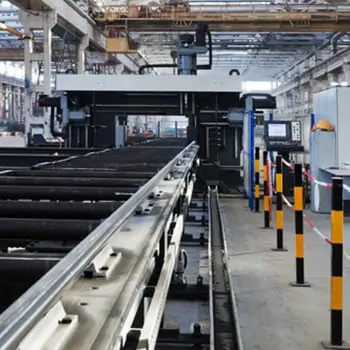
Like every modern industry, manufacturing hasn’t made it through the millennium unscathed by rapid globalization. Most Western manufacturing companies, large or small, have been ousted by cheaper, “leaner” manufacturers from across the world. To stay competitive in a more saturated market, these companies have been forced to adopt the best practices of their sworn international competitors.
One of these methodologies is Lean Manufacturing — inspired by Toyota’s legendary manufacturing practices. At its simplest, Toyota’s influential philosophy seeks to maximize all processes that add value and get rid of every step that doesn’t. It’s a practice of extreme corporate weight-loss that’s had far-reaching consequences for virtually every modern industry — not just manufacturing.
Another similar philosophy, Six Sigma, seeks to achieve the same goal — to cut the fat of unwieldy business processes. But there’s one major difference. Where Lean proponents will tell you that waste and inefficiency is borne of unnecessary steps that lack value, team Six Sigma will argue that it’s actually variations in a process that create waste.
Lean Six Sigma is the Frankenstein’s monster of both methodologies.
By combining the two focuses (1. unnecessary steps, and 2. process variation), this methodology has defined 8 kinds of waste common in a modern manufacturing production system:
| · Defects
· Over-Production · Waiting · Non-Utilized Talent |
· Transportation
· Inventory · Motion · Extra-Processing |
While Lean and Six Sigma approaches are an improvement over traditional manufacturing management strategies — companies adopting them must be weary of their blind spots.
Challenges with Lean Manufacturing
Before we tackle the biggest issues with the lean six sigma methodology, it would be pertinent to discuss the limitations of their most popular tools. Namely: SMED, bottleneck analysis, Kaizen, and value stream maps.
Single Minute Exchange of Dies (SMED)
SMED is the identification and elimination of waste by means of reducing equipment changeovers for work in process (WIP). In practice, this system is meant to improve throughput at the specific area where it is deployed.
The Challenge:
What if your company uses a multi-parallel system, where equipment changeover occurs outside of the critical path? That would mean that any improvement in the changeover time has a negligible effect on throughput.
What if faster equipment changeover creates downstream bottlenecks, like increasing equipment capacity beyond what subsequent processes can handle?
What if the implementation of this process and the realignment of your employees use up resources that would have more impact elsewhere?
Bottleneck Analysis
Bottleneck analysis is an attempt to identify the biggest sources of delays in your manufacturing process. In simple terms, a bottleneck is any step in your process that receives more requests than it can process. So, logically speaking, if you could identify these bottlenecks and increase their capacity (or eliminate them entirely), you would eliminate a great deal of waste.
 The Challenge:
The Challenge:
How can one suitably visualize any bottleneck issues just by using Kanban boards?
After all, the queuing of parts or WIP in any specific process may ebb and flow depending upon the time of the day, week, month, or year.
What if your process has dozens of small bottlenecks that only waste a few minutes at a time? As long as WIPs are being cleared by the end of a standard work period, these bottlenecks would be completely invisible to your analysis. Despite potentially wasting millions of dollars per year.
Further: Even if tasks in the “requested” column are lengthy (and even longer than other processes in the system), that doesn’t mean that the process can’t keep up. Nor does it mean that they’re representative of the average queue size going into the unit — merely that it’s the queue size that the observer sees at a given point in time.
Point being, without the aid of other tools, standard bottleneck analysis is severely limited in its application — especially in the context of a large and complicated manufacturing process.
Discover the Challenges of Your Manufacturing Operation
Kaizen Manufacturing
Kaizen, another element of lean manufacturing, is a methodology for incrementally improving every process in a company through the input of its employees. It is a collaborative approach that calls on all team members, from line workers to the CEO, to participate in the continuous improvement of company processes.
I completely applaud this, as it fosters a sense of ownership amongst employees and empowers individuals from all walks.
The Challenge:
However, Kaizen is not a means of methodically improving the system. Instead, it is a means of methodically improving individual processes within the system. An improvement in one area does not necessarily (or even typically) constitute an improvement to the system as a whole.
This misconception is especially problematic when combined with other lean techniques, like bottleneck analysis. What happens if incremental improvements in line-worker processes create dozens of tiny bottlenecks (which may be imperceptible to human analysis), actually creating waste within the system? By Kaizen’s standards, this would be seen as a net-positive movement, despite stealthily draining your company’s resources.
As such, Kaizen should be focused mostly on areas that contribute the best return on investment (ROI) — while being carefully monitored.
Value Stream Mapping in Six Sigma
Value stream maps are an important aspect of lean methodology. Simply put, they are a way of visualizing your company’s entire production process, from origin to delivery. While useful to gain a conceptual understanding of how to model a system, they are simplistic and deterministic instruments.
Here is the type of data that can be captured by value stream mapping:
- Inventory
- Cycle time (time taken to make one product)
- Change over time (from last good piece to next)
- Up-time (on-demand machine utilization)
- Number of operators
- Shifts worked
- Net available working time
- Scrap rate
- Pack size/pallet sizes
- Batch size
The Challenge:
Ultimately, value stream maps can’t effectively evaluate a system’s performance and do not provide much insight into where to invest your organization’s funds. They act as a conceptual birds-eye-view of your operations but lack any serious analytical power. Especially for complex, dynamic systems.
For example, value stream maps do not provide probability distributions, nor can they account for time-based changes. They provide little in the way of analyzing variability.
Since value stream maps only take a single snapshot of your process, they capture a very limited point of view. This makes it extremely difficult to precisely diagnose and treat issues within your process.
Solving Lean Six Sigma Problems with Simulation
There is a lot to appreciate about lean methodology; the general problem solving concepts and employee empowerment are salient ideas.
However, my issue with using lean tools without comprehensive simulation is two-fold:
- You may be focusing on the wrong process to improve.
- The analysis is too simplistic and myopic to use for complex systems.
Simulation provides a complete systems view. It accounts for variability in the real system and is a safer way to determine if a proposed improvement will work as it should.
Here are the four main problem areas of Lean / Six Sigma methods that can be addressed by simulation.
Problem #1. Inability to Effectively Calculate Projected ROI
Managers are unable to effectively calculate projected ROI on initiatives by having a uniform testing structure.
Suggested Solution:
A common simulation model that incorporates all parts of the Value Chain allows lean practitioners and those allocating funds to objectively evaluate multiple projects using the same model.
This allows you to compare apples to apples.
Problem #2. Lean Methodologies Do Not Account for the Whole System
As mentioned above, lean techniques do not account for the whole systems – they only account for individual processes. Not properly accounting for downstream effects (or upstream) may place the entire system in jeopardy. Death by a million cuts.
Suggested Solution:
By incorporating dynamic simulation models into evaluation processes, lean practitioners can determine the areas of focus that will yield the best results — while keeping a keen eye on the health of the overall system.
Solve Your Operations Problems With Simulation Consulting
Problem #3. Lean Methodologies Do Not Account for Dynamic Behaviour
Lean techniques do not account for a full range of factors such as dynamic behaviour, variability, or time. This makes it hard to conceptually grasp a system with simple tools.
Suggested Solution:
Simulation provides that visibility into all aspects of the system, regardless of focus.
Problem #4. Company Resources Are Wasted on Minimal Impacts
Lack of insight can cause improvement projects to optimize processes that have very little to do with the system’s output as a whole. This creates a perverse prioritization structure that may hurt your business more than it helps.
Suggested Solution:
To maximize your business systems process improvement, lean practitioners must analyze three important areas:
1. Bottlenecks
A bottleneck constraints the system so that at a certain point you can no longer increase production volume/throughput. This can be caused by a process, person, equipment, or combo of each.
2. Business Drivers
A business driver is a process, person, or equipment that has a significant impact on the business outcome, e.g., supplier arrival patterns may have the biggest impact on throughput, and therefore a small change in deliveries may have a more significant impact than any other part in the system.
A business driver can be measured quantitatively and analytically through regression.
3. Value Levers
A value lever is something to change in order to get improved performance. To continue with the previous example – changing the supplier arrival patterns and quantities may improve throughput.
The process, people, or equipment in these three areas can vary and are subject to change depending upon the product being processed and the schedule. Because they are so difficult to pin down in complex systems, the best tool for process improvement is a simulation.
Ultimately, Being Lean is Not Enough
Despite being the gold standard of modern manufacturing, the Lean approach has serious blind spots that may be bleeding your operation dry. While any process improvement is likely better than no process improvement — in today’s world, you’ll need something better than likely.
And Lean’s limitations are vast.
That’s because any attempt to improve individual processes within a very complex, interdependent system can lead to unintended consequences.
Furthermore, these approaches can only show you what your system looks like at a specific point in time, failing to account the dynamic nature of a large manufacturing operation. And unless you have a model to account for every variable (like simulation), you run the risk of wasting resources in your attempt to eliminate waste.
Ultimately, these approaches are merely tools. Ones with severe limitations. They’re not the be-all-end-all philosophies of manufacturing.
And in the modern world, they’re just not enough.
Learn More About How Simulation Can Improve Business Operations:
- Advice on Outsourcing Simulation Modeling
- Better Staffing Through Simulation
- Alphabot: A Case Study In Use Of Simulation For Product Feasibility Analysis
 The Challenge:
The Challenge: